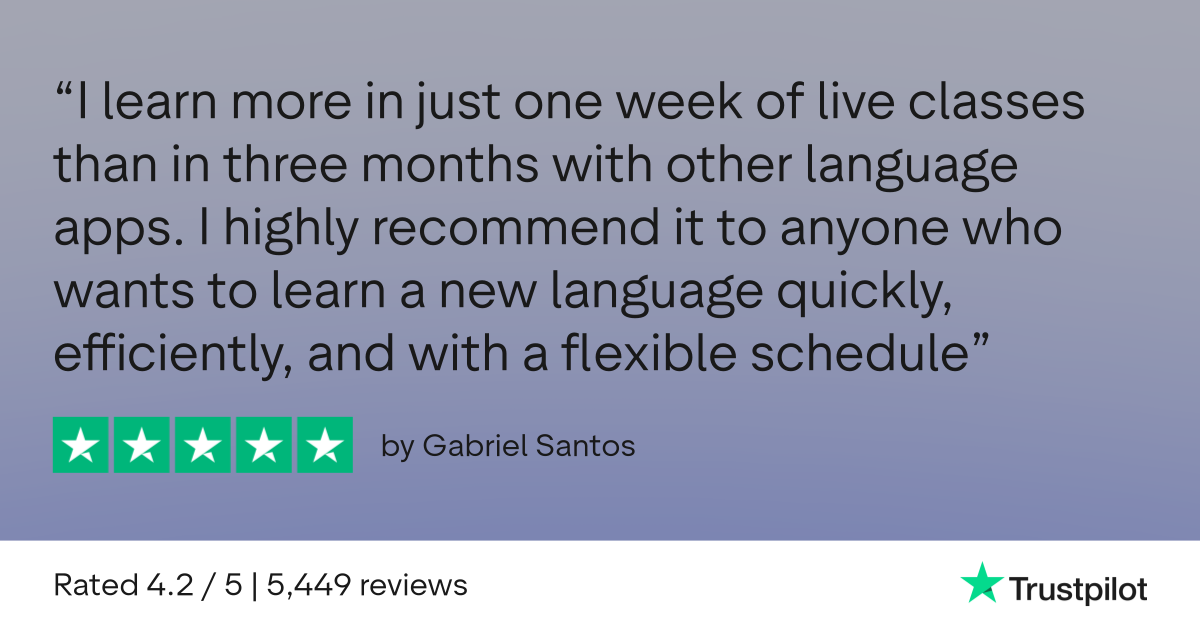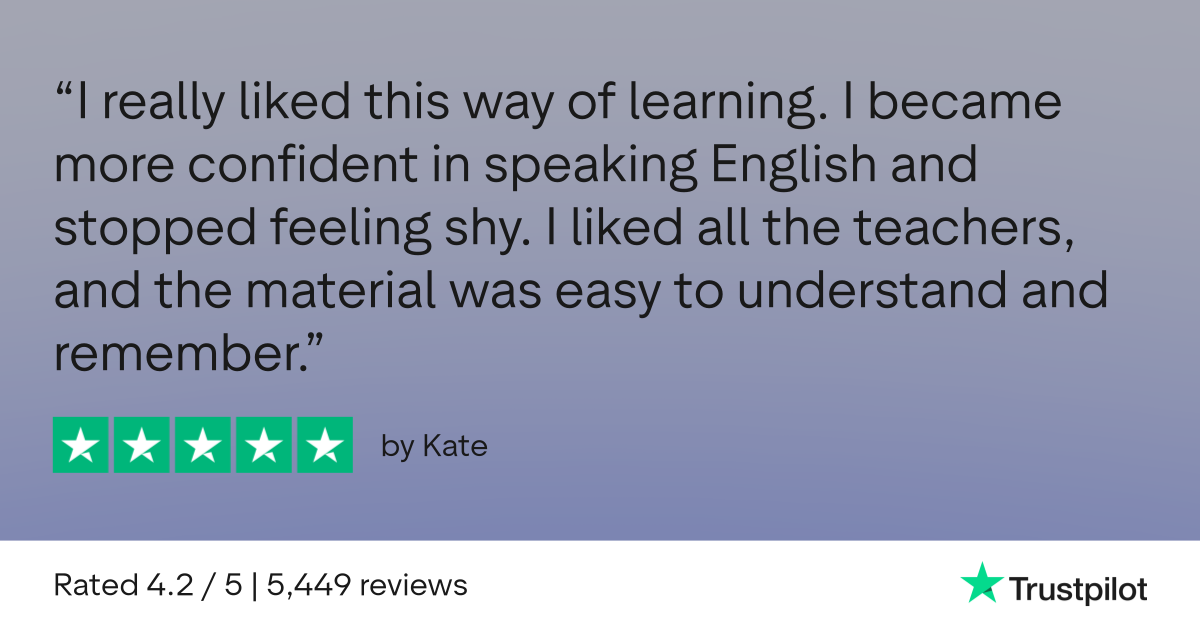How to give directions in English: Essential phrases, tips and examples
Getting from one place to another is something we all do every day. And often, people visiting a new place get a bit lost!

Being able to help someone find their way and give directions in English is a real confidence booster. For migrants, travelers and professionals, knowing how to ask for and understand directions also helps avoid stressful situations.
In this article, we’re going to help you increase your English vocabulary for giving and asking for directions. You’ll learn polite questions and real-life phrases to help you feel more confident about speaking English, whether you’re in your own city or visiting somewhere new. We’ll also give you some cultural tips to help you communicate clearly wherever you are in the world.
- Common vocabulary for giving directions
- Useful phrases for giving clear directions
- How to ask for directions politely in English
- FAQs
Common vocabulary for giving directions
When giving directions in English, you’ll need two main categories of vocabulary: directional words to describe movement and placement and words to describe landmarks and places. These are some of the most common spoken words in English, so they’re very useful to learn.
Directional words
- left
- ⬅️ The library is on the left.
- right
- ➡️The store is to the right.
- straight
- ⬆️Go straight for 500 meters.
- turn: To change direction by moving your body
- Turn left at the cinema.
- across (from) : On the other side of the street or a space.
- The grocery store is across the road.
- The cafe is across from the bakery.
- behind: At the back of something.
- The pharmacy is behind the bank.
- between: In the middle of two things.
- The hotel is between the supermarket and the post office.
Landmarks
- stoplight/traffic light
- The red, amber and green lights that control cars.
- Turn left at the traffic lights.
- intersection
- A place where two or more streets cross.
- At the intersection, turn right.
- corner
- The place where two streets meet.
- The apartments are on the corner of West Street and Maple Avenue.
- traffic circle/roundabout: A circular intersection where cars go around a central circle.
- Go right at the traffic circle.
- subway: An underground train that runs below the city.
- Take the subway to Times Square.
- bus stop: A place where buses pick up and drop off passengers.
- The bus stop is in front of the museum.
- block : The distance between two streets in a city.
- Walk three blocks and the hotel will be on your right.
- bridge: A structure that goes over a road, railway or river.
- Walk over the bridge.
Useful phrases for giving clear directions
Once you know the vocabulary, you need to put those words into full sentences. Here are some common phrases you can use:
General phrases
- Go straight for two blocks.
- Turn left at the corner.
- Keep going until you reach the intersection.
- At the stoplight, turn right.
- Go across the bridge and you’ll see the square.
- The church is behind the supermarket.
Informal phrases
- Take a right at the intersection.
- Head straight for a few minutes.
- You can’t miss it!
Driving directions
- At the roundabout, take the second exit.
- (On the highway): Take the exit for Route 26.
How to ask for directions politely in English
When you stop a stranger for directions, it’s important to be polite and clear. Here are three phrases to use:
- Excuse me, where is the nearest pharmacy?
- Could you tell me how to get to the station?
- Do you know how to get to the Landek Hotel?
Always start with “Excuse me” to get someone’s attention and speak in a friendly tone. In English-speaking countries in particular, you don’t need to be overly formal when talking to strangers. Using gestures can be helpful, and pointing with your finger or hand to indicate or check a direction tends to be fine in the English-speaking world.

Learn English with Lingoda
How it works

Overcoming nerves
If you feel nervous, practice asking these questions out loud before you visit a new city. And remember, people are usually happy to help tourists and are patient with people who are speaking a second language. A friendly smile goes a long way!
Real-life communication and cultural tips for giving directions
In real conversations, locals often rely on landmarks rather than street names to give directions:
- It’s just past the gas station.
- The movie theater is behind Marly’s Pizzeria.
- Just keep going straight and you’ll come to a huge church.
- You’ll see the police station, and the hotel’s right behind that.
Hedging language
When people aren’t sure, they use hedging language. For example:
- I think it’s about two blocks from here.
- It should be on the next corner.
- You might want to check the map.
This softens the message and helps avoid giving wrong directions too confidently.
North American vs. British English
Some words differ between North American and British English. Don’t worry: people will usually understand you no matter which version you use, but here’s a crash course in some useful terms.
| North American English | British English |
| traffic circle/roundabout | roundabout |
| intersection | crossroads |
| subway | underground/the Tube (in London) |
| block | - |
| crosswalk | zebra crossing |
| parking lot | car park |
| gas station | petrol station |
British English speakers might use more indirect language when giving directions. For example:
- “If you go straight for about 5 minutes, the car park should be on the left.”
North American speakers can be more direct:
- “Go straight for 5 minutes and the parking lot is on the left.”
Always listen for keywords. In this case: “go straight”, “5 minutes” and “on the left.”
How to give directions clearly
To give directions clearly, use short sentences and focus on key points. For example: “Turn left at the intersection. Go straight for one block. The art gallery is behind the station.”
What is the grammar for giving directions?
We tend to use the imperative to give directions in English. That’s the infinitive form of the verb without ‘to’, which is commonly used to give instructions. For example: Turn left. Take a right.
Mastering directions for real-life English communication
Being able to give directions in English and ask where to go aren’t just textbook language skills. They’re practical tools you can use in everyday life, whether you’re at home or abroad. And the more you practice in real-life situations, the more confident you’ll feel. So, next time you see someone who looks lost, go up to them and offer to help.
If you want to practice in a welcoming environment, learn English with Lingoda. Our lessons are built around real-life scenarios, and native-level teachers will guide you through authentic role plays. With structured lessons, you’ll learn at your own pace, building the confidence to use your language skills in the real world. Start practicing today, and soon, you won’t feel lost when giving directions in English.

Learn English with Lingoda
How it works

















